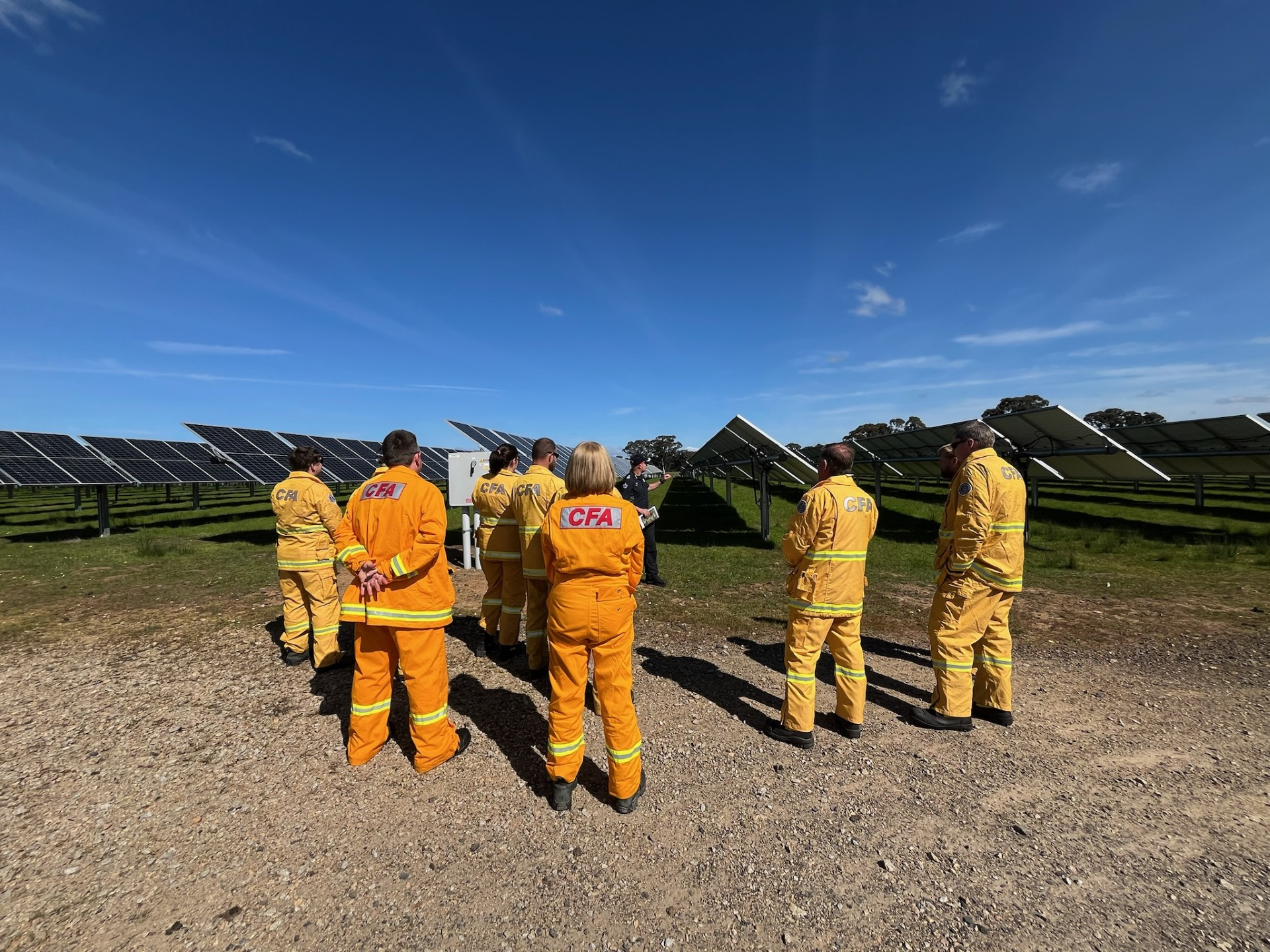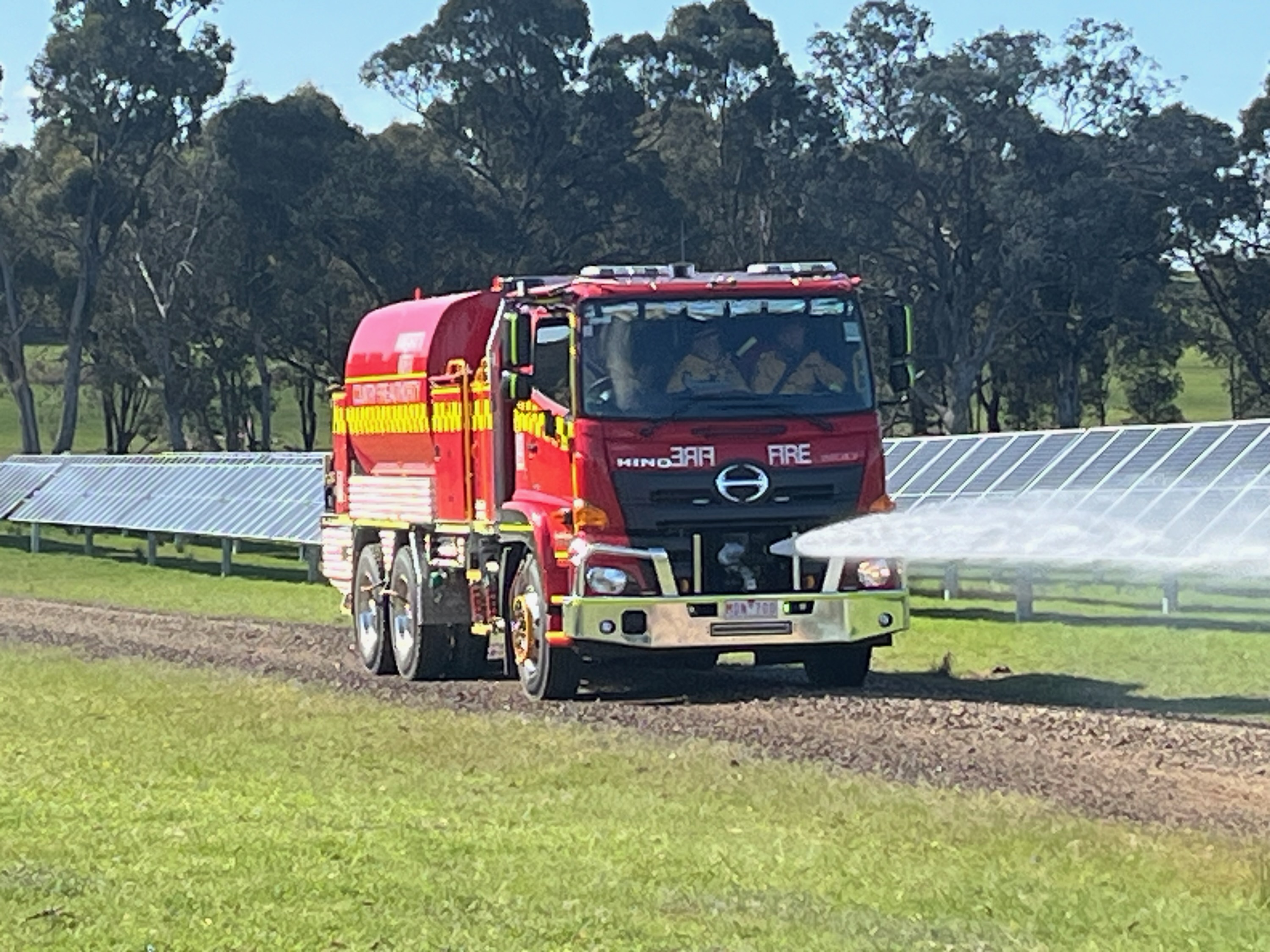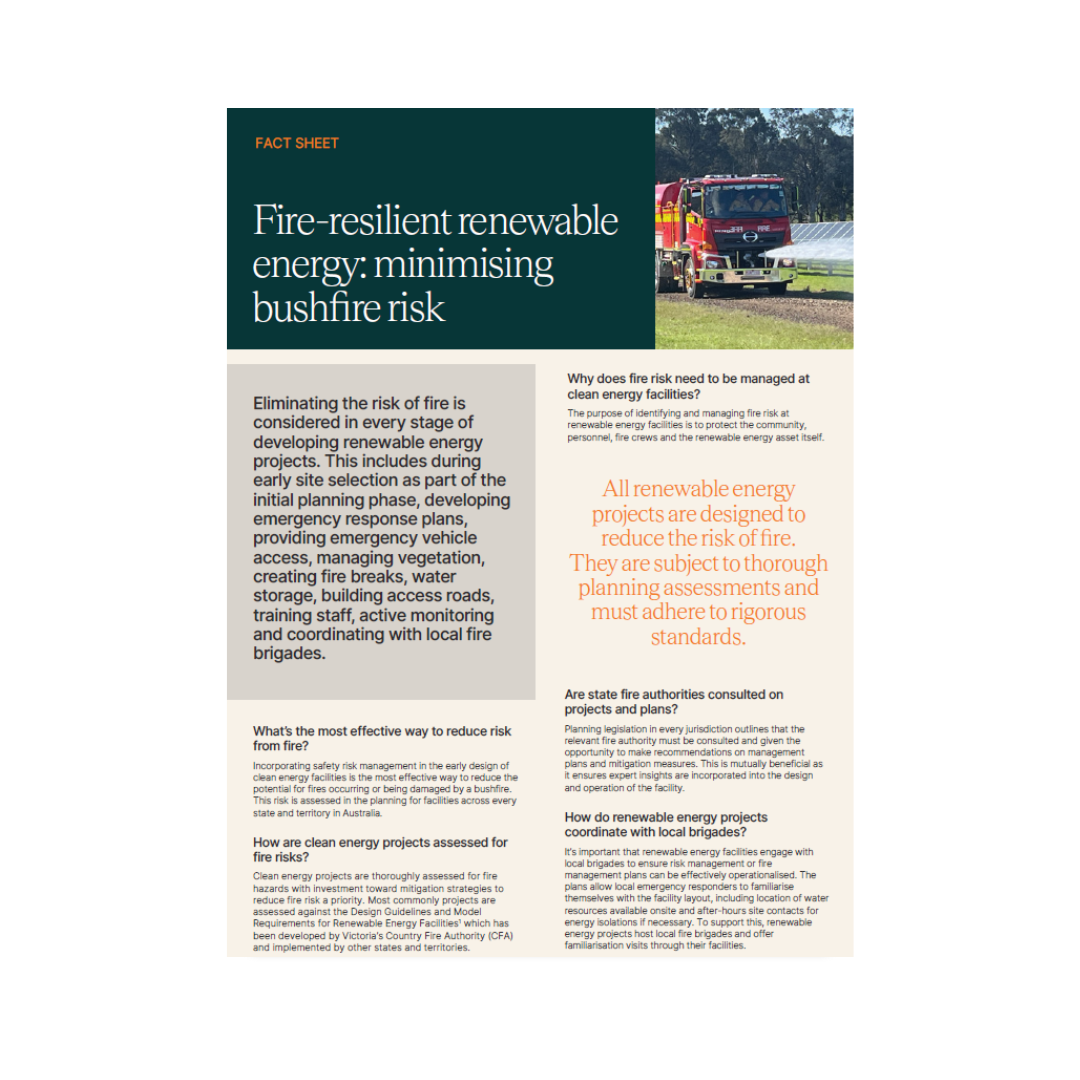Eliminating the risk of fire is considered in every stage of developing renewable energy projects. This includes during early site selection as part of the initial planning phase, developing emergency response plans, providing emergency vehicle access, managing vegetation, creating fire breaks, water storage, building access roads, training staff, active monitoring and coordinating with local fire brigades.
What’s the most effective way to reduce risk from fire?
Incorporating safety risk management in the early design of clean energy facilities is the most effective way to reduce the potential for fires occurring or being damaged by a bushfire. This risk is assessed in the planning for facilities across every state and territory in Australia.
How are clean energy projects assessed for fire risks?
Clean energy projects are thoroughly assessed for fire hazards with investment toward mitigation strategies to reduce fire risk a priority. Most commonly projects are assessed against the Design Guidelines and Model Requirements for Renewable Energy Facilities1 which has been developed by Victoria’s Country Fire Authority (CFA) and implemented by other states and territories.
1 Renewable Energy Fire Safety | CFA (Country Fire Authority)
Those responsible for renewable energy sites develop multiple plans to minimise risk, which are developed in accordance with fire authority guidelines. These plans are reviewed regularly and updated as required.
Why does fire risk need to be managed at clean energy facilities?
The purpose of identifying and managing fire risk at renewable energy facilities is to protect the community, personnel, fire crews and the renewable energy asset itself.
Are state fire authorities consulted on projects and plans?
Planning legislation in every jurisdiction outlines that the relevant fire authority must be consulted and given the opportunity to make recommendations on management plans and mitigation measures. This is mutually beneficial as it ensures expert insights are incorporated into the design and operation of the facility.
How do renewable energy projects coordinate with local brigades?
It’s important that renewable energy facilities engage with local brigades to ensure risk management or fire management plans can be effectively operationalised. The plans allow local emergency responders to familiarise themselves with the facility layout, including location of water resources available onsite and after-hours site contacts for energy isolations if necessary. To support this, renewable energy projects host local fire brigades and offer familiarisation visits through their facilities.
What is included in fire mitigation plans?
Projects develop multiple plans to minimise risk. Plans are developed in accordance with Country Fire Authority (CFA) guidelines and are reviewed regularly and updated as required. Plans usually provide a detailed description of the facility, including location, size and types of clean energy technologies used. Plans will also detail emergency vehicle access, firefighting water supply, fire break widths, separation distance and ignition sources. The plans provide evacuation routes, assembly points and procedures for personnel, as well as how to communicate during an emergency, including internal communication and coordination with external emergency services.
Three of the most common plans include:
• An overarching Emergency Management Plan that outlines a company’s obligations to prevent, prepare and respond to any emergencies that may impact the site, such as fires.
• A Fire Management Plan, which needs to be approved by the local fire authority in each state, which includes procedures for dealing with fire on site and the water required to be kept on site for that specific purpose.
• A Risk Management Plan that has identified hazards and the strategies to be applied to lower the risks (e.g. grass cutting and removal of vegetation within the 10-metre fire break).
What about transmission lines?
Transmission lines pose a very low risk of starting a fire2. The height clearance between transmission lines and the ground, as well as management of vegetation beneath, are factors ensuring lower fire risk.
Can transmission lines be turned off in the event of an emergency?
Transmission lines are remotely operated and can be shut down, if required, in extreme conditions by the grid operator. The protection systems will switch off the power if a fault occurs on a transmission network to prevent an electrical fire.
What are some of the practical steps taken to manage bushfire risk around transmission lines?
Bushfire risks at renewable energy sites are proactively managed by cutting back vegetation near power lines, reducing electricity flows on windy or smoky days, planning maintenance so it does not coincide with high bushfire risk or high temperature days3 and coordinating with local fire brigades
2 Transmission lines fire risk: ETL-Bushfire-FINAL-amended-April-2023.pdf (esv.vic.gov.au)
3 Practical bushfire risk management: ESCI Case Study 3_Bushfish risk for transmission 090721.pdf (climatechangeinaustralia.gov.au)

CASE STUDY
Country Fire Authority (CFA)
Victoria’s Country Fire Authority is working with its members across Victoria on how to safely fight fires at renewable energy facilities. Glenrowan, Winton and Wangaratta North Brigades went through the steps of how to fight a fire at an exercise on the Glenrowan West Solar farm.

